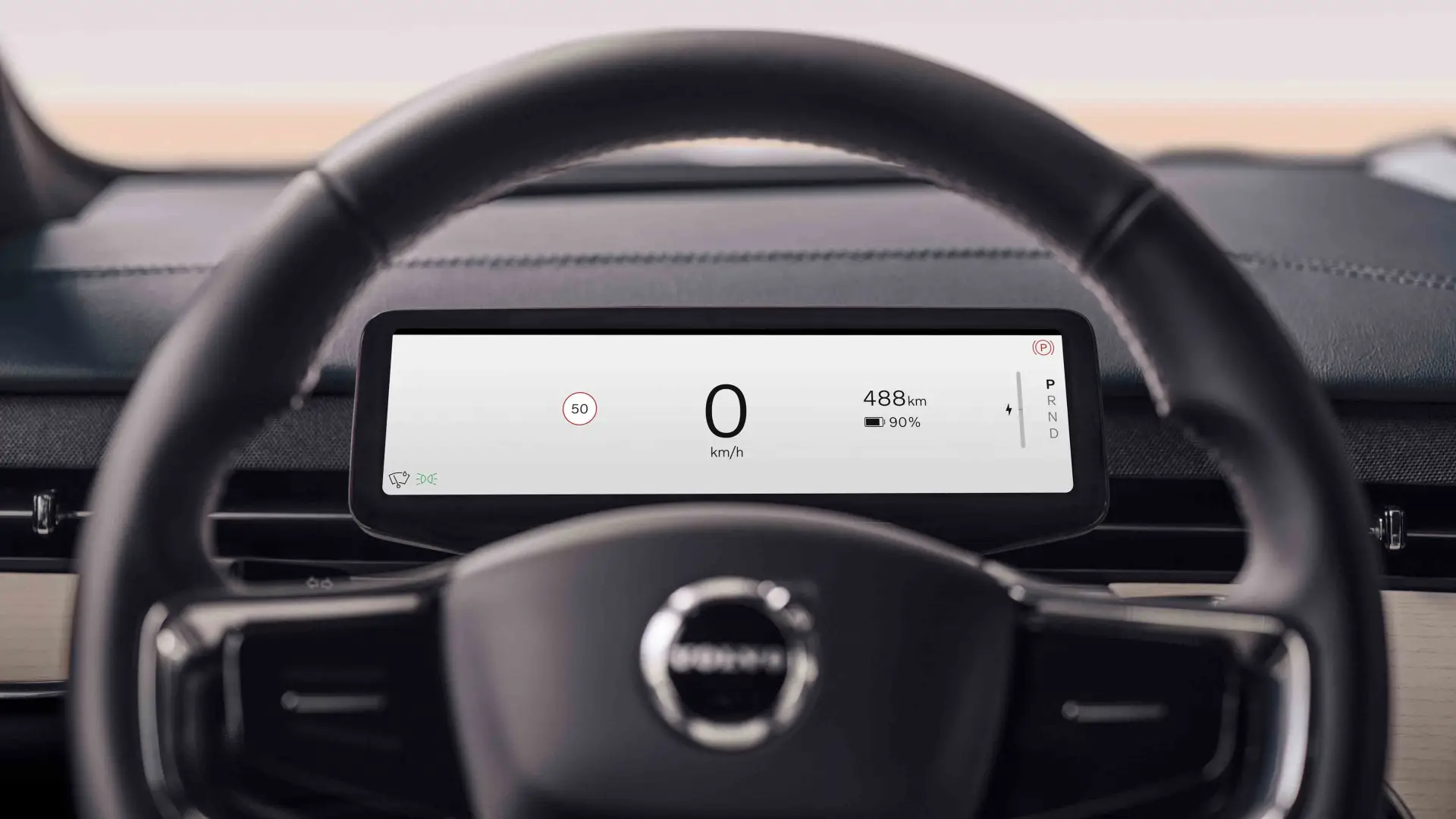Volvo’s new electric SUV will have 25% less carbon footprint
Manufacturing an electric car has a higher carbon footprint than an equivalent combustion car, due to the emissions generated to manufacture the battery, although they are later offset during use. However, Volvo is ready to overthrow that premise with its next electric car, the Volvo EX30. The Swedish brand wants to set a historic precedent with an electric car that will have a lower carbon footprint than any other Volvo manufactured to date.
The Volvo EX30 will be the brand’s smallest and most economical electric model, an SUV designed for cosmopolitan life in the city. That does not mean that Volvo is going to give up the values that it has always boasted about (rightly), since the small EX30 will incorporate all the technological and safety advances of the brand.
The other key is that Volvo has aimed for the EX30 to have a lower lifetime CO2 footprint than any other Volvo vehicle made to date, even accounting for emissions from battery production. The company will reduce the total carbon footprint in the entire process of planning, design, development, production, and transportation of the vehicle, in addition to its subsequent use. Essentially all the steps that need to be taken from the time the car goes from being a concept car to hitting the dealership.
In short, the Volvo EX30 has a CO2 impact of approximately 18 tons “from cradle to gate”, that is, from the extraction of raw materials to its arrival at the dealership, before it is put into circulation. This is 32% less emissions than a current electric C40 Recharge and almost the same as an XC40 with a combustion engine (with CO2 emissions of 16.3 tonnes).
Counting its use, Volvo calculates that the carbon footprint of the EX30 is below 30 tons of CO2 after a useful life of 200,000 kilometers. This is 25% less compared to the all-electric C40 and XC40 models currently sold, assuming they are recharged with electricity from the current EU-27 electricity mix.

According to a study published in 2021, an electric C40 Recharge that recharges in the mix of the European Union has associated CO2 emissions of 42 tons throughout its entire useful life. A petrol XC40 emits 59 tonnes of CO2 over its lifetime, 40.5% more compared to an electric XC40 or C40. As for the little brother, compared to a similar gasoline model, the electric Volvo EX30 will emit half of CO2 into the atmosphere during its useful life.
How is it achieved?
That is the big question. How has Volvo managed to reduce the overall CO2 emissions in this car so significantly? First, designing a smaller vehicle, which means fewer materials are needed to make it. Aluminum and steel are two of the elements that contribute the most to CO2 emissions during the production process, so using less is a good way to pollute less.
In addition, it uses more recycled materials: around 25% of the aluminum and 17% of the steel used in the manufacture of the Volvo EX30 come from recycling, which further reduces the environmental impact. In addition, the EX30 has been designed in such a way that it is 95% recyclable at the end of its useful life.
The same approach is maintained inside the vehicle, reducing the number of parts “without compromising functionality,” says Volvo. Recycled materials are also used in the cabin for the seats, dashboard, and doors, including denim, linen, and a wool blend that also contains around 70% recycled polyester. According to Volvo, around 17% of all plastic items, from interior components to exterior bumpers, are made from recycled plastic, the highest percentage used in a Volvo vehicle to date.
Last but not least (in fact, it is a crucial point) is the reduction of emissions in the manufacturing and supply chain. The Volvo EX30 will be built in a plant powered by high levels of renewable energy, with little or no environmental impact. As far as the supply chain is concerned, 95% of Volvo’s suppliers have committed to using exclusively renewable energy in their production processes by 2025 although, according to Volvo, many of them are already doing so. To this, we must add that Volvo uses blockchain technology to trace the origin of critical raw materials (currently lithium, manganese, cobalt, graphite, and nickel).
The new Volvo EX30 will be presented on June 7, the date on which it will already be available for orders or reservations in some markets.
The post Volvo’s new electric SUV will have 25% less carbon footprint appeared first on Latest Car News.
Latest Car News
Comments
Post a Comment